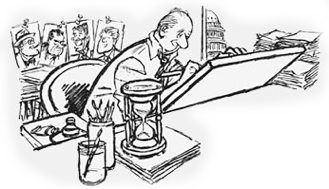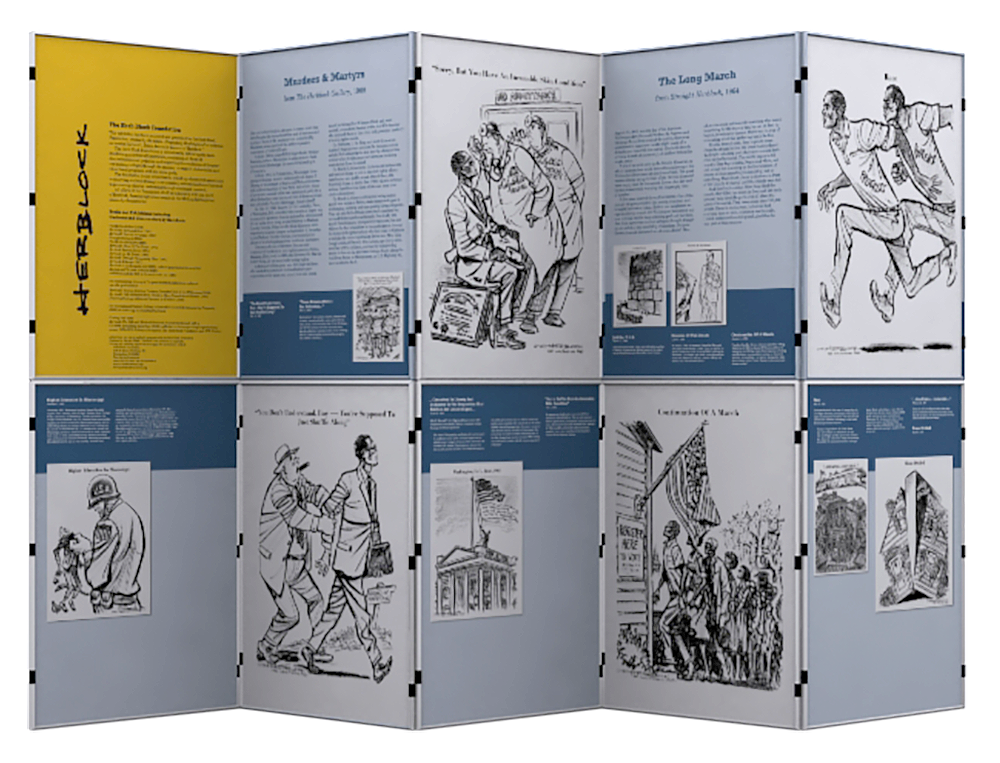The Long March
Looking at Herblock’s political cartoons over seven decades we realize he was one of those people that fought long and hard to make us a better people. Herblock’s cartoons continue to resonate and will speak to us about these crucial events in our history for many generations to come.
Request Exhibition
A Teacher's Guide
The Civil Rights Movement was one of Herblock’s chief concerns. He illustrated its history and dialogue through all of its growing pains and showed us show who we are as Americans, what we have learned, and what we are still learning about Civil Rights. Looking at Herblock’s political cartoons over seven decades we realize he was one of those people that fought long and hard to make us a better people. Herblock’s cartoons teach us still and will speak to us about these crucial events in our history through many generations to come.
1. American Dream Discussion and Project
Have a class discussion on the American dream and how it came to be, asking how an individual’s dreams could be hampered without the actions of The Civil Rights movement. Discuss how it became possible for African American and other minorities to achieve their goals despite the contradictions of the American way, using specific examples. Pair the lack of simple basic liberties and the affect on an individual’s path to making their dreams a reality. In a drawing or written essay, have the students compare obstacles and achievements of Civil Right heroes.
2. Family Civil Rights Story or Art Piece
Have each student conduct an interview of a family member, acquaintance, or neighbor on their personal experience during a tumultuous time at the height of the Civil Rights Movement, using video or recording, focusing on the narrative flow of the story. Questions should be arranged to encourage the personal telling of the story. Have the students discuss the interviews and which interview affected them most.
3. Letter from a Birmingham Jail
Show examples of Herblock’s work, illustrating Dr. Martin Luther King’s struggle during the Civil Rights movement. Have students read Letter from a Birmingham Jail, by Dr. Martin Luther King and ask them to take notes on the parts of his letter that have an impact on them. Have them draw or write about the passages that inspire them.
4. Current Civil Rights
Have the students imagine they are Herblock and chose a current civil rights event and show how they think Herblock would draw from it and have them draw the same event from their point of view.
5. Reflections on Voice, Activism and Apathy
Herblock was an outspoken man of integrity, freedom, independence and vision. Discuss with the class the importance of having a voice, taking an active role in their personal rights and the importance of speaking up for oneself and those who are not able. Have them write or draw about a moment where someone found it easier to remain silent and explain the results of that action.
6. My Talents Assignment
Herblock used his talents in pursuit of what he believed to be right and true. Have students think of what their talents are, and write a fictional story based on these talents and discuss if the accomplishments are actually believable and attainable.
 Herb Block is among the world’s best known and most admired political cartoonists. Born on October 13, 1909, the native Chicagoan spent his 72-year career fighting against abuses of the powerful.
Herb Block is among the world’s best known and most admired political cartoonists. Born on October 13, 1909, the native Chicagoan spent his 72-year career fighting against abuses of the powerful.





















